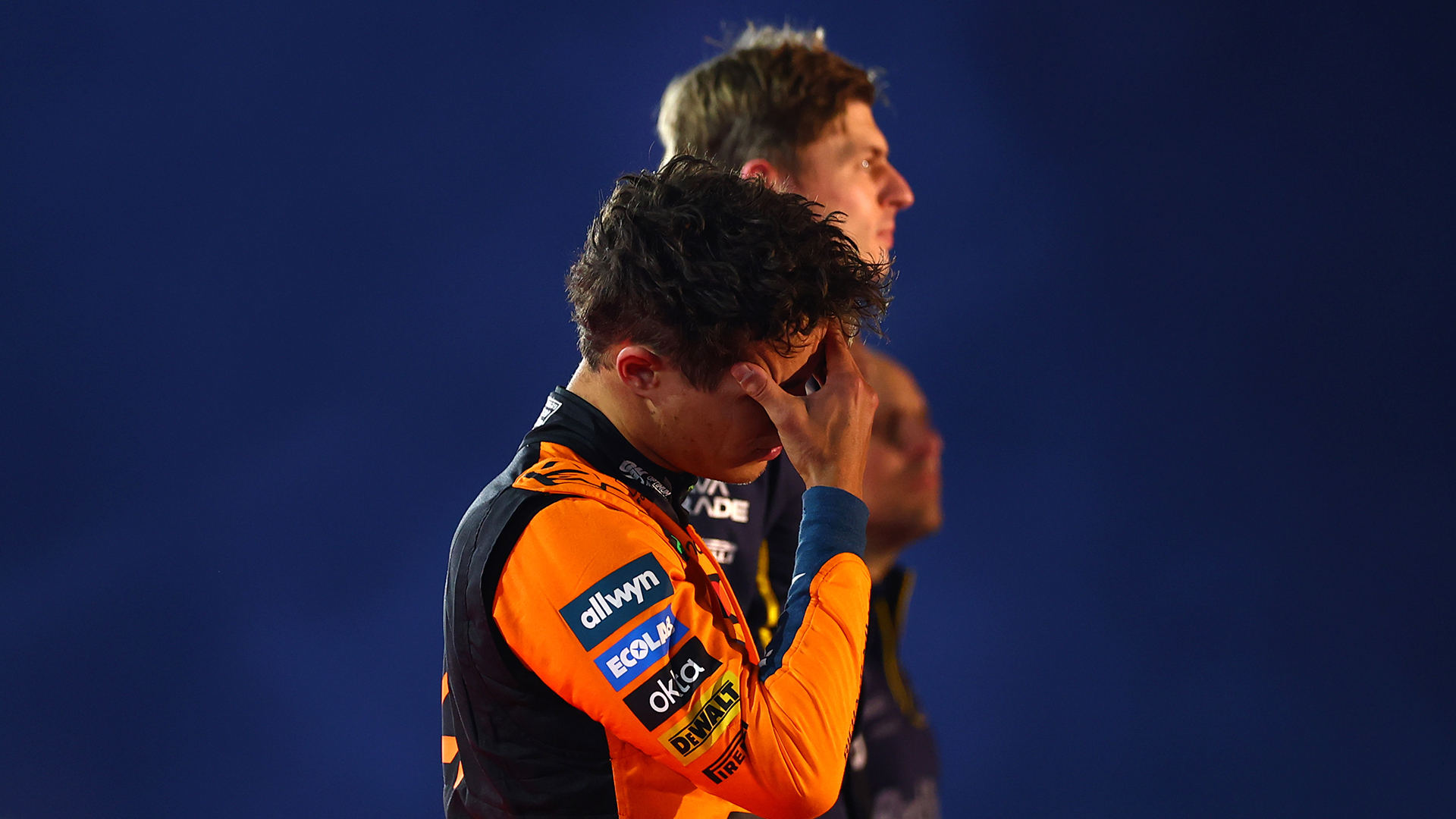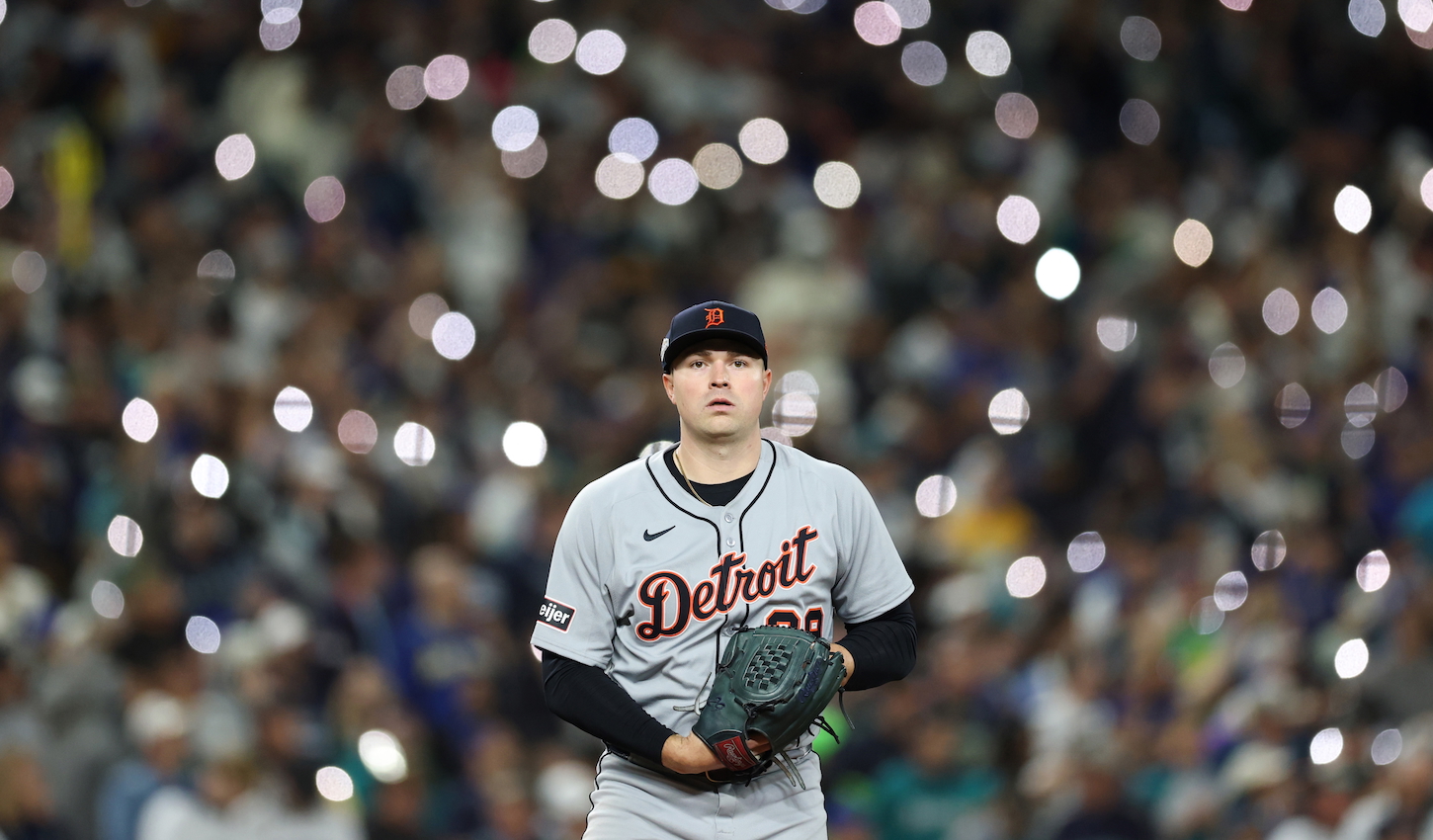When I went to bed on Saturday night, I wasn't planning to write about the 2025 Las Vegas Grand Prix. After a surprisingly successful opening race in 2023, and Max Verstappen's fourth coronation in a row in 2024, this year's edition of the most Americanized race in an increasingly Americanized sport was a dud. After some turn one action in which Verstappen capitalized on a risky Lando Norris maneuver to take over first place, a spot that the Red Bull driver held on to for the entire race en route to his sixth win of the season, Vegas marched on with little drama. The highlight was probably Mercedes's Kimi Antonelli putting in the best drive of his young career, nursing hard tires for 48 laps to finish fifth (he finished fourth on track, but had earned a five-second penalty for jumping the start before lights out; Oscar Piastri finished fifth but within those five seconds, so he moved up into fourth, at least temporarily). There was a bit of intrigue with regards to Verstappen's likely futile late charge for the title, as he once again beat both McLarens and slowly inched his way within 42 points of Norris, but that was not enough to get excited about.
When I woke up on Sunday morning, though, everything had changed at the very top of this season's previously unshakable standings: Both McLaren drivers were disqualified following car inspections that found plank wear beyond what is allowed. What does this mean? The plank—or, more specifically in this case, the rear skid—is a piece of material at the bottom of F1 cars that protects the underside of the car while also helping to regulate minimum ride height. The plank comes in contact with the track as a race goes on and wears down slowly but surely, and it is up to the teams to ensure that the wear doesn't lower the plank's width to under nine millimeters, from its starting width of 10 millimeters at minimum; this is always measured by the stewards for all points-scoring cars at the end of the race, and there's no leeway here.
In practice, this means that teams try to thread the needle and make the thinnest plank possible, in order to get the car as close to the ground as possible in order to generate more downforce, which helps turn these machines at higher and higher speeds. However, the closer to the minimum that a team gets with its planks, the more likely any bit of in-race jankiness can lead to a DQ. This happened in the most Ferrari way possible to Lewis Hamilton at the Chinese Grand Prix earlier this year, where his plank was found to be a whopping half millimeter too thin at race's end. McLaren's breaches weren't quite so pronounced, but the magnitude doesn't affect the decision: According to the FIA, Norris's plank wear was 0.12 millimeters past the allowed limit, and Piastri's was at 0.26, leading to both drivers getting disqualified.
After the race, the FIA made it clear that this was less cheating from McLaren and more unintentional bad luck, which helps minimize any potential penalty risk beyond the disqualifications, but that'll be little consolation for Norris and Piastri. Though McLaren tried to argue that the plank wear issues were caused in part due to the shorter practice time this weekend—Thursday's P2 session was cut short in part due to two red flags, and Friday's P3 was mired by rain—and everyone's favorite F1 term, porpoising, the argument was in vain, as the measurements are absolute, and the punishment is severe. To me, this feels like a case of McLaren trying to gain every advantage on a track where it wasn't as strong and getting it just wrong. No harm no foul—save for the points lost, and they are a doozy.
The double DQ has given Verstappen a real chance at the title, and an even better chance at finishing second in a season that looked to be heading toward a McLaren clean sweep. Let's start with that, actually: Ever since winning in the Netherlands back in August, Piastri, the previous championship leader, has fallen off a cliff performance-wise, and his continued run of disappointment is now compounded by losing those 10 points that, coincidentally, marked his lead over Verstappen prior to the DQ. Now, Piastri and Verstappen are tied for second place with two races remaining, and on pure form, I'd give the edge to Verstappen, who has been on a tear as Piastri's season has fallen apart: Since finishing second in that same race, in his home country, the reigning champion has won four of seven races, finished second but ahead of both McLarens in Singapore, and then third in the two others.
As for Norris, he had managed to salvage his Vegas race after his turn one aggression failed almost immediately, and though he lost seven points to Verstappen by finishing second, he was still 42 points ahead at race's end. With the DQ, that gap is now just 24 points. Since the Qatar race weekend also includes a sprint race, there are just enough points for Verstappen to take back his title, though he'll need a bit of help.
Put simply, if Norris finishes at least second in the sprint and both proper races, that'll be enough to win his first drivers' title, no matter if Verstappen does a clean sweep of all three. McLaren's margin for error, already shrinking by the race, has almost evaporated, though, as any sort of mistake that leaves Norris mired further down the grid could blow the whole season up at the end. To give a plausible example, if Norris were to finish seventh, as he did in Azerbaijan thanks to a messy qualifying session, that would be enough for a Verstappen clean sweep to finish the job that no one, save perhaps for Verstappen himself, thought he could as recently as Hungary on Aug. 3, when he finished ninth.
The most likely outcome is still that Norris wins the title. He is just far enough ahead that he would need to screw up royally while Verstappen remains flawless. That's not an impossible scenario, but despite moments of Norrisesque flubs this season, the 26-year-old has been good enough when it has mattered. It should never have been this difficult, though, and Verstappen is the type of horror-movie adversary that can never be killed quite so easily. Thanks to a fraction of a millimeter, the Dutch demon is ready to hunt right down to the climax of this often-straightforward season, and McLaren might end up ruing the smallest of violations that could cost the team its first drivers' title since 2008.







